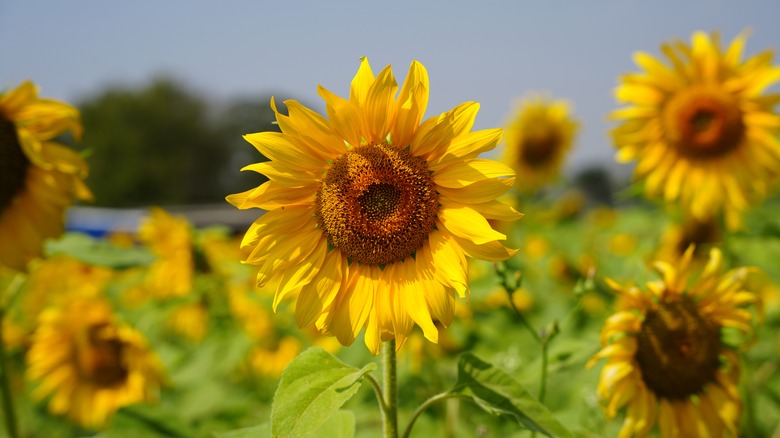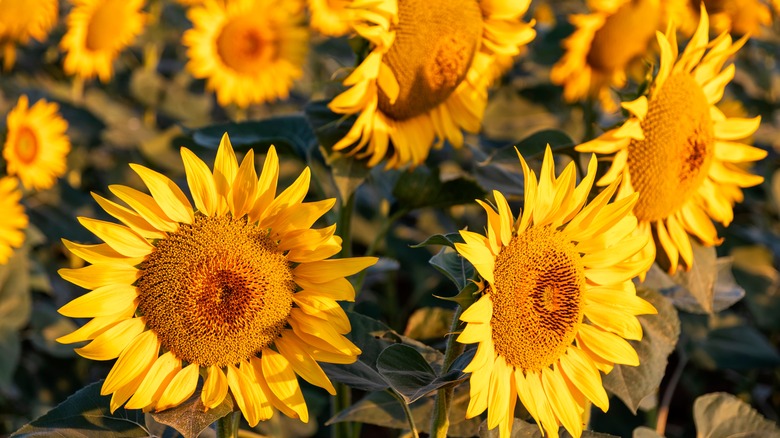The Perfect Time To Divide Sunflowers For Full, Gorgeous Blooms
Helianthus, or sunflowers, as you probably know them, shoot up tall toward the sky, always leaning toward the light with their iconic sunny confidence. And most of the classic types are annuals, which grow fast, bloom once, and then die at the end of the season. But there are also perennial varieties that come back year after year, spreading underground through thickening roots and rhizomes. There are ways to tell if you're sunflowers are perennials or if they need to be replanted. If you find that you have perennials, then over time, they may sprawl aggressively and start crowding out nearby plants. This is when division comes in handy, breaking up the clumps so that the plants stay healthy and don't take over the whole space.
Division works best in the spring or fall — in spring, you untangle the roots before they've thrown all their energy into becoming those thick stalks, and in fall, the bloom is over but the soil is still warm and easy to work with. The idea here is to try and work with the plant's natural rhythm instead of against it. To divide the roots, use a garden fork or spade to lift the root clump, then shake or rinse off the soil and cut it with a sharp knife, replanting right away. Just make sure each division is given fresh soil with plenty of space (about twice the size of the root ball) and is watered well. It's important to give sunflowers their own space, as they may be the reason your other plants are suffering if they're left unchecked.
How division changes the bigger picture
Gardeners often notice stronger stems and fuller petals after a good division, and it's a process that is recommend every two to three years. Another perk of division is longevity. Without periodically dividing the roots, they will compete underground. By breaking the plants apart every few years, you will ensure renewed airflow. Trim away any weaker parts of the root ball to make pests less likely to settle in.
For newer growers of this plant, it's important to know where to grow your sunflowers for the healthiest plants possible. They will grow in USDA Hardiness zones four through nine, as they can handle a wide range of conditions, but ultimately, they'll always appreciate a bit of human intervention to keep them balanced and healthy. So while division might feel like some extra labor, we promise, it pays off with thriving plants and flowers that look like they belong in a painting.

